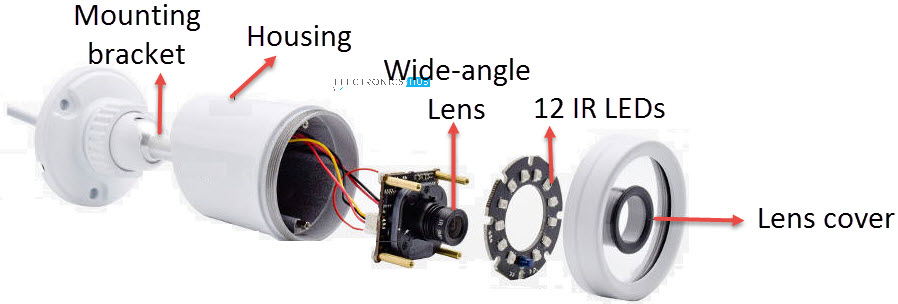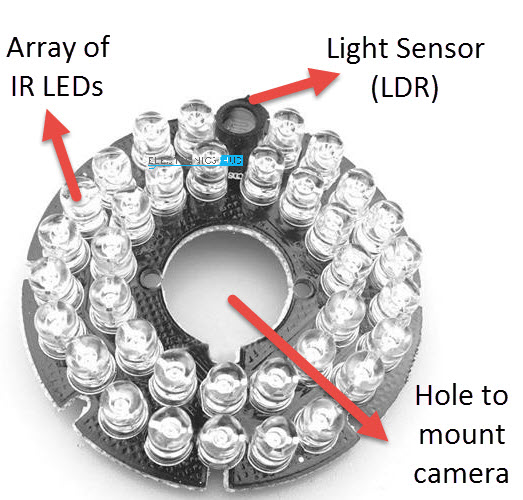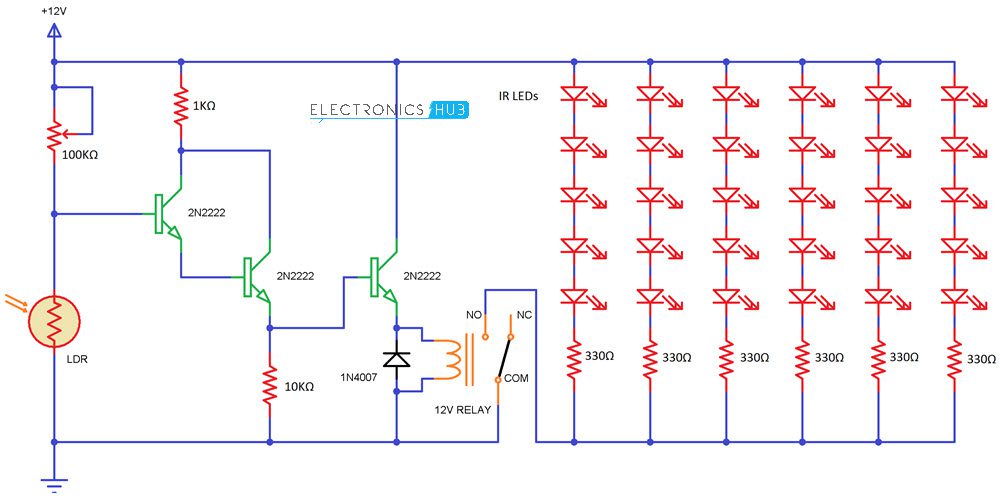Introduction
Night Vision, as the name suggests, is the ability to see at night i.e. at low-light. As humans lack (or have very poor) night vision, we make use of technological ways i.e. cameras with special features. Although developed for military usage, the night vision technology and the corresponding equipment are becoming easily available to normal public use. The Night Vision technology, as a part of Enhanced Vision Systems, is a part of the aircraft security system, which aids the pilot in surrounding awareness to avoid crashes. Modern day automobiles (mostly in high-end cars) are fitted with Automotive Night Vision system, which help the drivers to see better in dark or poor lighting conditions.
Different Types of Night Vision Technologies
Based on how vision at low light is achieved, the night vision technologies can be classified into three types. They are:
Image Intensification Active Illumination Thermal Imaging
Image Intensification
Image Intensification is a technique of magnifying the photons received from stars or moonlight. Basically, it amplifies the available light to a much higher intensity. This technique mis also known as Low Light Imaging. The image sensor of the camera usually contains both visible light sensors as well as Infrared detectors.
Active Illumination
Active Illumination is a combination of Image Intensification and an active source of light usually in the Infrared frequency. Hence, this technique is also known as Infrared Illumination or simply IR Illumination. The Infrared Illumination system usually consists of an IR Illuminator, which emits infrared radiations in the range of 700nm to 1000nm, and a special CCD Camera, which is sensitive to the above-mentioned radiation.
There are different ways to implement the Infrared Illuminators but overall, image quality of Active Illumination Night Vision Cameras is higher when compared with other techniques.
Thermal Imaging
Every object radiates infrared light. Thermal Imaging is developed based on this fact and the difference in temperatures between the foreground and background objects is detected. Cameras designed on this technique are known as Thermal Imaging Cameras and are very good night vision equipment.
So, what is an Infrared Illuminator?
Based on the above discussion, the elements of Infrared radiation, IR sources and IR Illuminators are a key part in the Night Vision Technology. So, what are IR Illuminators? Simply speaking, IR Illuminators or Infrared Illuminators are nothing but sources of Infrared radiation of the electromagnetic spectrum. There are two basic sources of IR Radiation. They are:
Primary or Active Sources Secondary or Passive Sources
Primary or Active Infrared Sources emit IR radiation purely based on their internal reactions like thermal, chemical or electrical. In other words, Active Infrared Sources emit IR Radiation on their own. Sun is the main, natural source of active IR radiation. We will see more artificial active IR sources a little later. Coming to Secondary or Passive Infrared Sources, they do not actively emit IR radiation but rather reflect the IR radiation that is incident on them by an active source. Passive Infrared Sensors or PIR devices work on the same principle.
Where are IR Illuminators used?
All the future discussion of IR Illuminators refers only to active IR Sources, unless otherwise specified. So, coming to the uses of IR Illuminators, one of the main applications of the are in the Night Vision Technology.
Usually, they are fitted around the camera lens so that the camera captures the objects as they reflect the IR Radiation emitted by the IR Illuminators. If your home or office has CCTV Cameras for security purpose, then chances are that is definitely has an integrated IR Illuminator in the form of an array of IR LEDs.
Different IR Illuminating Devices
Basically, there are three infrared illuminating devices that can be used as IR Illuminators for various applications. They are:
IR LEDs Filtered Incandescent Bulbs IR LASERs
We will now see a little about each of these devices and where they are typically used.
IR LEDs
Perhaps the simplest, most commonly used and easily available IR Illuminators are the IR LEDs or Infrared Light Emitting Diodes. IR LEDs emit infrared radiations in the range of 700nm to 800nm of the EM Spectrum and are usually made up of Aluminium Gallium Arsenide (GaAlAs). The operating voltage is in the range of 1.2V to 1.4V and they have a forward current of 20mA to 30mA. They are used in night vision cameras, CCTV Cameras (for night vision) and also in proximity sensors.
Filtered Incandescent Bulbs
The obsolete incandescent bulbs are a good source of high intensity infrared radiation. To use the as IR Illuminators, a special Infrared Filter is applied so that only IR Radiations is emitted and the normal visible light is blocked. They are usually used in vegetation i.e. as grow lights for indoor plantation.
IR LASERs
Light Amplification by Stimulated Emission of Radiation or simply LASER is a technique of optical amplification to produce a high intensity coherent light. IR LASER is a special type of LASER which emits infrared radiations at a higher wavelength than other sources. Due to their high energy and intensity, IR LASERs are considered to be dangerous and are only used in military applications.
Simply DIY IR Illuminator Circuit
The following is a simple circuit that acts as an Infrared Illuminator for CCTV Cameras. It detects the ambient light and if the intensity of the light falls below certain range (like night time), the IR Illuminator is activated to enable might vision.
Components
12V Power Supply (atleast 12V @ 1A) 30 IR LEDs (5mm) 6 x 330Ω Resistors (1/4 Watt) 3 x 2N2222 NPN Transistors 12V Relay 100KΩ Potentiometer LDR 1KΩ Resistor 10KΩ Resistor 1N4007 Diode
Working
The circuit can be divided into three parts: the light sensor, the relay driver and the IR Illuminator. The combination of 100KΩ Potentiometer and LDR act as a potential divider and along with the Darlington Pair, they help in sensing the ambient light. As the intensity of light falling on the LDR decreases, its resistance changes and the relay gets activated with the help of its driving transistor. When the relay gets activated, the IR LEDs get a path to the ground and the start to glow. The 100KΩ POT can be used to adjust the sensitivity of the lighting conditions. Coming to the IR LEDs, they are 5mm Infrared LEDs with a forward voltage of 1.2V and a forward current of 20mA. A series of 5 IR LEDs are connected with a current limiting 330Ω resistor. Six such combinations are connected in parallel to for an IR Illuminator array of 30 LEDs. You can easily add more LEDs but make sure that the power supply has enough juice to provide sufficient current.
Advantages of IR Illumination
When used in night vision, they provide good sensitivity and are not easily affected by ambient light. They are considerably inexpensive. If IR LEDs are used as IR Illuminators in night vision, they provide a reliable option with low power consumption, good longevity and rugged usage.
Comment * Name * Email * Website
Δ








![]()